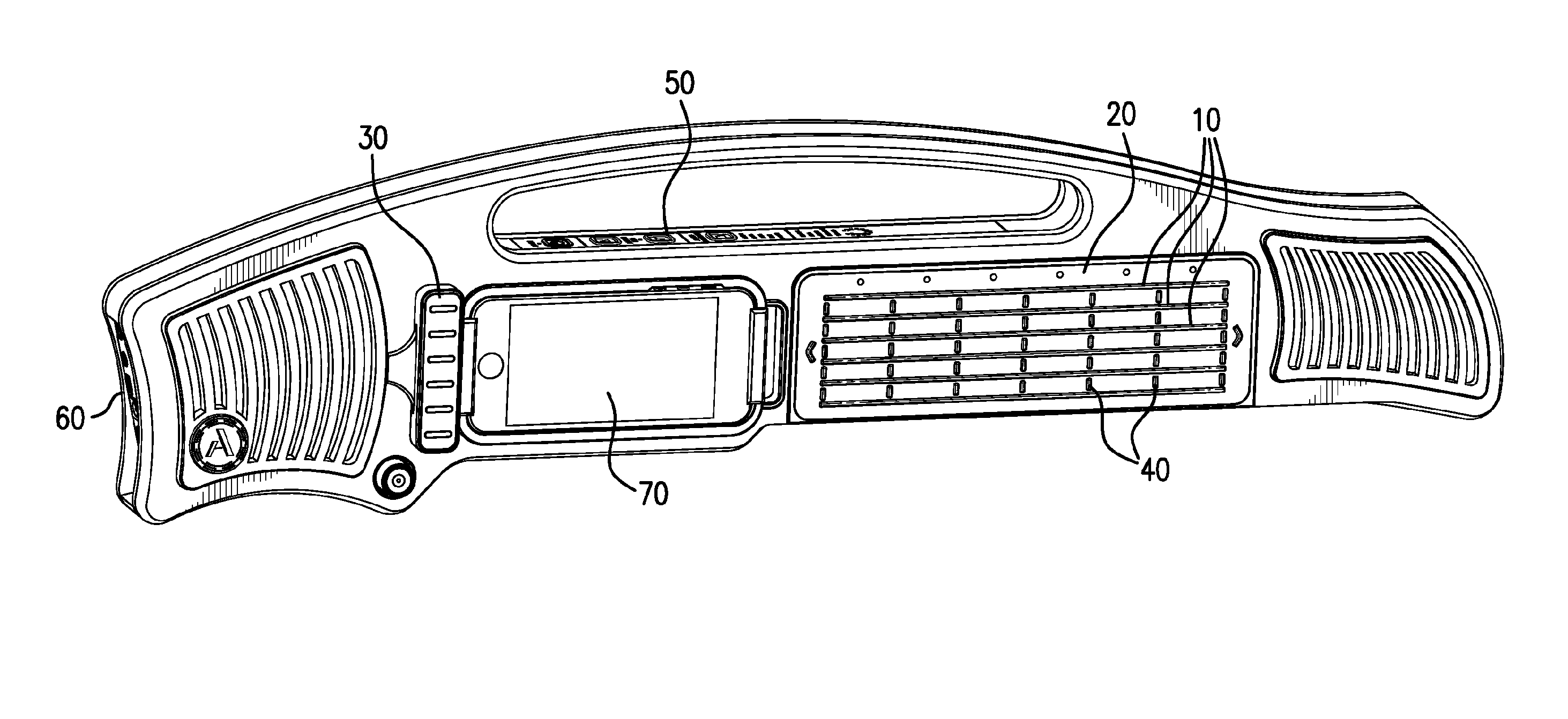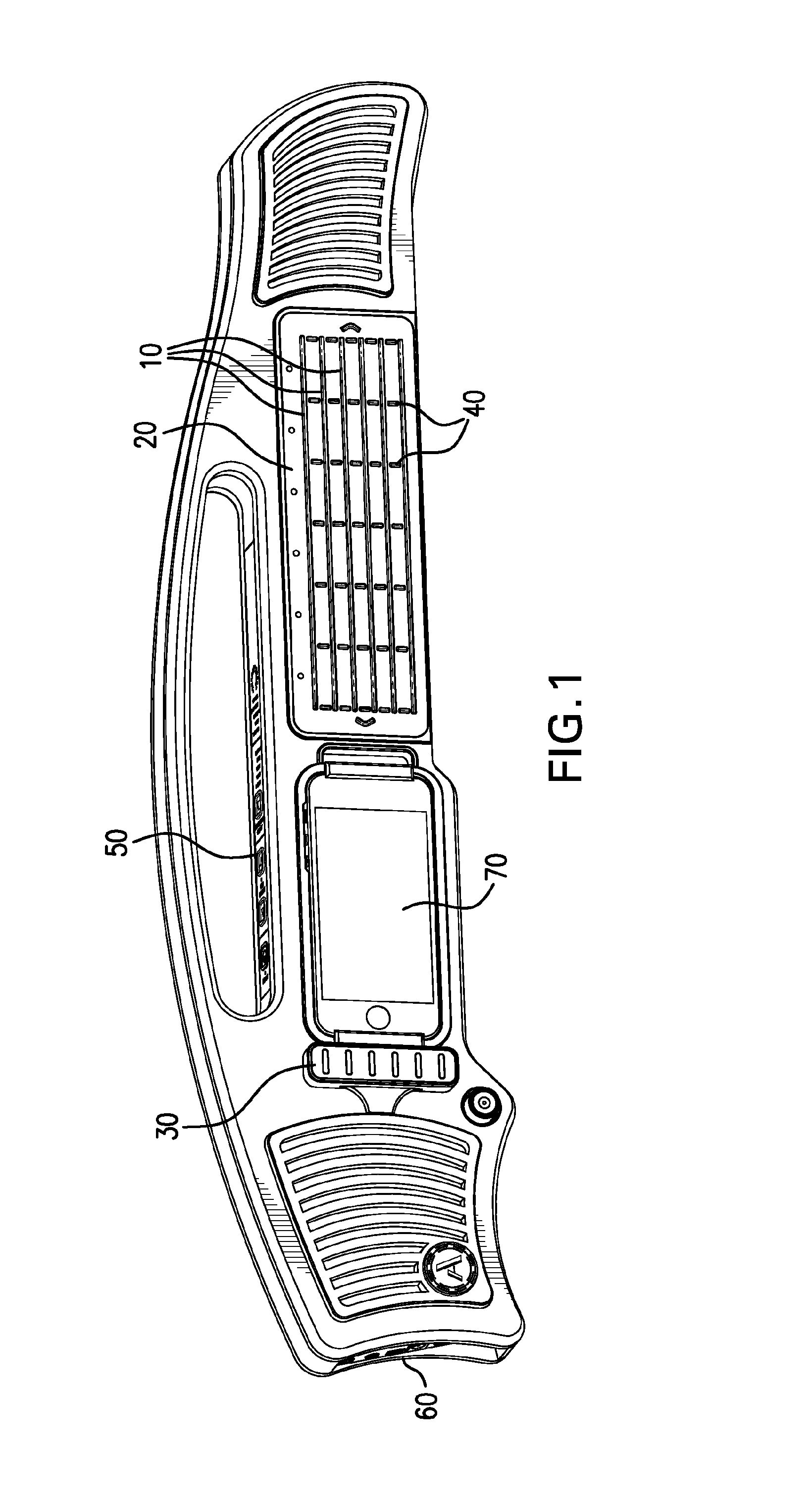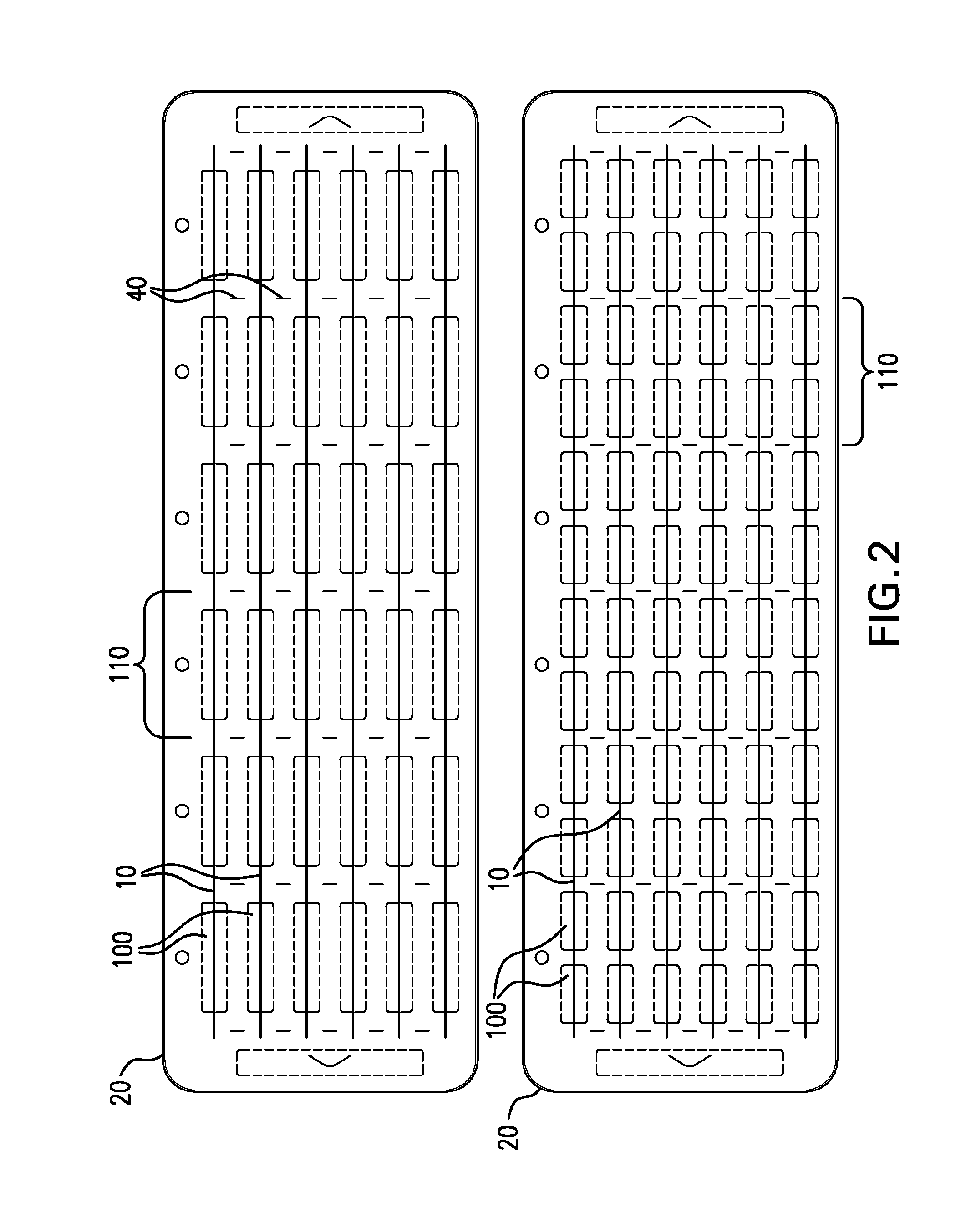Ergonomic electronic musical instrument with pseudo-strings
a musical instrument and electronic technology, applied in the field of ergonomic electronic musical instruments with pseudostrings, can solve the problems of not tapping the full potential of the software that musicians control, the limited selection of hardware options available to musicians as means to control software, and the inability to select software. the selection of hardware options remains significant, and the effect of tactile input in these touch screen computers
- Summary
- Abstract
- Description
- Claims
- Application Information
AI Technical Summary
Benefits of technology
Problems solved by technology
Method used
Image
Examples
Embodiment Construction
[0041]The following list of defined terms is not intended to be limiting or comprehensive but merely provides a quick reference tool for understanding the invention. Other defined terms are capitalized in other sections of this document where they are used. Capitalized terms shall include all variants, and singular and / or plural versions of the terms used herein.
[0042]“External Peripheral” means a Peripheral that communicates with the instrument wirelessly or using wires, but is not permanently attached to or integrated into the instrument.
[0043]“Fingerboard” means that portion of the instrument which is used to direct the instrument to a particular musical note.
[0044]“Fret” on a traditional stringed instrument is a raised portion extending across a fingerboard to divide the fingerboard into segments representing different musical intervals and, in the context of the instrument, a Fret means the divisions between distinct data signal triggering zones, either formed mechanically with...
PUM
 Login to View More
Login to View More Abstract
Description
Claims
Application Information
 Login to View More
Login to View More - R&D
- Intellectual Property
- Life Sciences
- Materials
- Tech Scout
- Unparalleled Data Quality
- Higher Quality Content
- 60% Fewer Hallucinations
Browse by: Latest US Patents, China's latest patents, Technical Efficacy Thesaurus, Application Domain, Technology Topic, Popular Technical Reports.
© 2025 PatSnap. All rights reserved.Legal|Privacy policy|Modern Slavery Act Transparency Statement|Sitemap|About US| Contact US: help@patsnap.com



